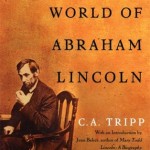 The premise of the book is that Abraham Lincoln was a homosexual, or at least a bisexual. The problem with this premise is that it is purely conjecture and the author does not support it at all. Basically, he just made it up.
The premise of the book is that Abraham Lincoln was a homosexual, or at least a bisexual. The problem with this premise is that it is purely conjecture and the author does not support it at all. Basically, he just made it up.
C.A. Tripp was a sex researcher and colleague of Alfred Kinsey, and author of The Homosexual Matrix. This background so stilted his research methods and how he drew his conclusions that the book is simply a preconceived contention in search of support. Unfortunately for Tripp, he provides none. Tripp passed away two weeks after supposedly completing the manuscript for the book. In an introduction, the Mary Todd Lincoln biographer Jean Baker apologetically notes that if Tripp had lived he most certainly would have had to edit the book more extensively and that at least one more chapter would likely have been added. In reality, another chapter would not have made any difference. The book is so weak that the publishers provided three “reactions and comments” from outside reviewers in an Afterword. The book also includes three appendices that supposedly support the author’s contention, though these materials actually do not provide any additional support whatsoever.
The only “evidence” that Tripp provides for Lincoln’s presumed homosexual tendencies is the well known fact that Lincoln shared beds with men during his lifetime. But this standard is so low that the majority of men during that era would be classified as having homosexual tendencies, as it was commonplace to share sleeping arrangements in the cramped quarters of the time. This is especially true for those, like Lincoln, who were quite poor early in their lives and who traveled extensively on the legal circuit with other lawyers and judges. Tripp offers no evidence at all of any sexual relationship with anyone. He merely presumes it and bases the entire book on this unsupported assumption. Of all the writings by Lincoln, his presumed inamoratos, friends, colleagues, and family, none suggests any sexual relationship at all with any man. In fact, all suggestions by Lincoln’s contemporaries of normal sleeping arrangements are rebuffed by Tripp as somehow, these people who knew him best, simply being oblivious to the obvious signs. The problem is that these signs are apparently obvious only to a homosexual sex researcher of the late 20th century incapable of viewing events from the perspective of the first half of the 1800s. His only other “evidence” is the fact that Lincoln told some ribald jokes; something again that ignores the fact that Lincoln was constantly telling stories, most of which were not, in fact, sexually oriented at all. Nor does telling jokes make anyone gay.
It should be noted that most of the book actually is taken up questioning his relationships with the various women Lincoln courted. Somehow all of these heterosexual relationships, and the fact that he sired four children with Mary Todd (who he spends an entire chapter decimating), merely show that he was secretly harboring homosexual tendencies. In the end, the book provides no evidence whatsoever of such tendencies, and in fact, provides substantial evidence to the contrary. Clearly the book was written based on the predisposition of the author and cannot be considered a credible examination of Lincoln’s life.
More book reviews can be seen by clicking here and scrolling down.
David J. Kent is an avid Lincolnophile and the author of Tesla: The Wizard of Electricity. You can order a signed copy directly from me, download the ebook at barnesandnoble.com, and find hard copies exclusively at Barnes and Noble bookstores.
Follow me by subscribing by email on the home page. And feel free to “Like” my Facebook author’s page and connect on LinkedIn. Share with your friends using the buttons below.



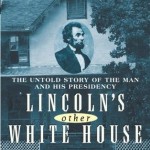 Abraham Lincoln lived in the White House from March 1861 until his assassination in April 1865. Or did he? In fact, he spent most of the summer months of 1862 through 1864 – about a quarter of his presidency – living in the Soldier’s Home. Author Elizabeth Smith Brownstein gives us a fascinating, as well as delightful, look at Lincoln’s Other White House.
Abraham Lincoln lived in the White House from March 1861 until his assassination in April 1865. Or did he? In fact, he spent most of the summer months of 1862 through 1864 – about a quarter of his presidency – living in the Soldier’s Home. Author Elizabeth Smith Brownstein gives us a fascinating, as well as delightful, look at Lincoln’s Other White House. This 1992 book is somewhat uneven and could have used some better editing, but it does provide some excellent insights into Abraham Lincoln’s rhetorical style. The author, Lois J. Einhorn, was an Associate Professor of Rhetoric at the State University of New York.
This 1992 book is somewhat uneven and could have used some better editing, but it does provide some excellent insights into Abraham Lincoln’s rhetorical style. The author, Lois J. Einhorn, was an Associate Professor of Rhetoric at the State University of New York.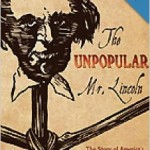 This book, The Unpopular Mr. Lincoln: The Story of America’s Most Reviled President, is a rather extraordinary look at Abraham Lincoln. And a remarkably pleasant surprise given the uncustomary view of Lincoln, as well as the providence of the author. Larry Tagg is not whom you might expect to be writing a biography of Abraham Lincoln. Some will recognize the name from the music world and Tagg’s band Bourgeois Tagg, or from his many years touring with Todd Rundgren, Hall & Oates, and opening for Robert Palmer, Belinda Carlisle and others. Now a high school English and drama teacher in California, Tagg surprises the reader with his deep understanding of Lincoln and his times. And he tackles an often overlooked and difficult facet of how Lincoln was viewed by contemporaries.
This book, The Unpopular Mr. Lincoln: The Story of America’s Most Reviled President, is a rather extraordinary look at Abraham Lincoln. And a remarkably pleasant surprise given the uncustomary view of Lincoln, as well as the providence of the author. Larry Tagg is not whom you might expect to be writing a biography of Abraham Lincoln. Some will recognize the name from the music world and Tagg’s band Bourgeois Tagg, or from his many years touring with Todd Rundgren, Hall & Oates, and opening for Robert Palmer, Belinda Carlisle and others. Now a high school English and drama teacher in California, Tagg surprises the reader with his deep understanding of Lincoln and his times. And he tackles an often overlooked and difficult facet of how Lincoln was viewed by contemporaries.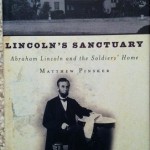 When most people think of Abraham Lincoln, they think of him toiling away in the White House, occasionally making his way to the adjoining War Department to check telegraph news from the front. Few know that Lincoln and his family actually spent much of the summers of 1862, 1863 and 1964 living at the “Soldier’s Home” and commuting daily to the White House.
When most people think of Abraham Lincoln, they think of him toiling away in the White House, occasionally making his way to the adjoining War Department to check telegraph news from the front. Few know that Lincoln and his family actually spent much of the summers of 1862, 1863 and 1964 living at the “Soldier’s Home” and commuting daily to the White House.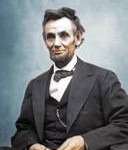 As I do research on Abraham Lincoln for a forthcoming book I periodically post reviews of some of the more interesting and relevant Lincoln scholarship. Which led me to this great book dating back to 1956 called Lincoln and the Tools of War by Robert V. Bruce.
As I do research on Abraham Lincoln for a forthcoming book I periodically post reviews of some of the more interesting and relevant Lincoln scholarship. Which led me to this great book dating back to 1956 called Lincoln and the Tools of War by Robert V. Bruce. Abraham Lincoln once gave a speech that was so awe-inspiring that all the reporters there forgot to write it down. Sounds implausible, right? Ah, but it’s actually true. Elwell Crissey takes us back to May 29, 1856 with “Lincoln’s Lost Speech: The Pivot of His Career.” And despite the little problem of not having a record of the actual speech, Crissey does a great job enlivening the whole event surrounding its presentation.
Abraham Lincoln once gave a speech that was so awe-inspiring that all the reporters there forgot to write it down. Sounds implausible, right? Ah, but it’s actually true. Elwell Crissey takes us back to May 29, 1856 with “Lincoln’s Lost Speech: The Pivot of His Career.” And despite the little problem of not having a record of the actual speech, Crissey does a great job enlivening the whole event surrounding its presentation. Spencer Weart takes us on a journey into the past. In The Discovery of Global Warming, Weart provides a history of the science that has now come to be known as Anthropomorphic Global Warming (AGW), or more simply, man-made climate change. And in doing so he demonstrates just how robust and voluminous is the scientific case for human induced climate change.
Spencer Weart takes us on a journey into the past. In The Discovery of Global Warming, Weart provides a history of the science that has now come to be known as Anthropomorphic Global Warming (AGW), or more simply, man-made climate change. And in doing so he demonstrates just how robust and voluminous is the scientific case for human induced climate change.






